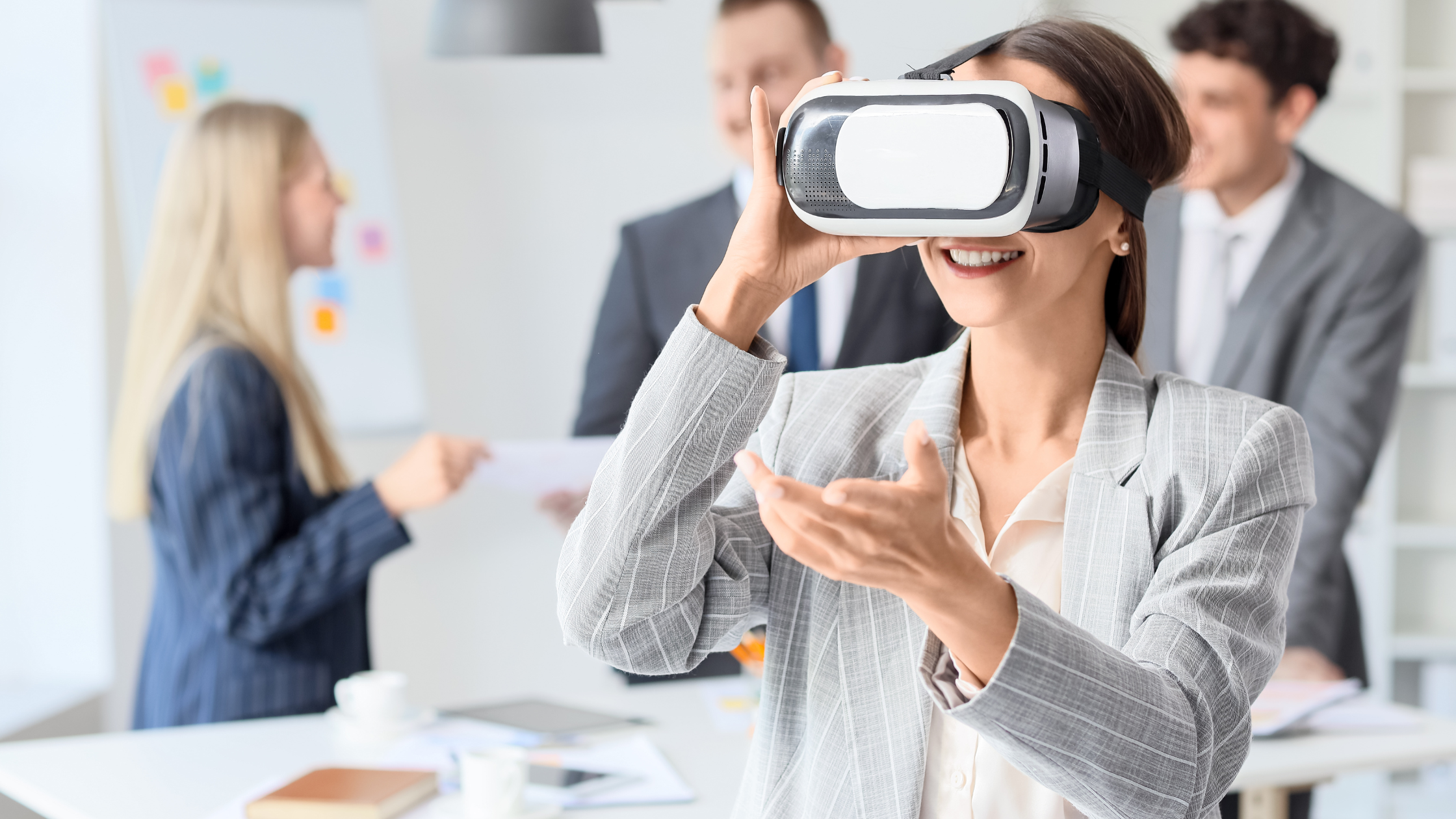VR in Visual Merchandising: From Shopper Engagement to Operational Transformation
Virtual reality (VR) has long been associated with video games and early adopters.
Today, it’s emerging as a strategic force in retail innovation, moving beyond novelty into meaningful, measurable impact.
After proving its value in elevating shopper experiences, VR is gaining traction as an operational tool with the potential to reshape retail merchandising.
From immersive retail visualization to accelerated resets, its promise lies in solving long-standing industry challenges with speed, sustainability, and consistency.
VR in General Retail Today: Immersive Experiences for Shoppers
When most people think about VR in retail, the focus is on shopper engagement. These tools are already transforming how shoppers browse, try, and buy:
Augmented Experiences: Virtual Try-Ons Bring Products to Life
Static product shots don’t always capture a product’s impact, and marketing videos can feel too staged to inspire trust. Augmented reality allows shoppers to see products in scale, context, and motion — building trust in ways static visuals cannot.
Through AR technology, shoppers can try on a pair of glasses, test a lipstick shade, or even visualize how a jacket fits — all without a fitting room. The benefits are clear: Shoppers gain confidence, retailers cut down on costly returns, and the path to purchase becomes frictionless.
(Explore our guide to 2025 Retail, Visual Merchandising, and AI Trends for examples of AR-powered merchandising in action.)
Realistic Digital Stores: Shopping Without Boundaries in VR
Virtual reality takes immersion even further. Instead of simply trying on a product, shoppers can step into fully realized brand worlds.
Leading retailers are building virtual storefronts that shoppers can explore from their homes via desktops or VR headsets. These life-like spaces expand reach beyond four walls, making brand experiences accessible to anyone, anywhere.
Whether it’s exploring virtual showrooms or playing interactive games tied to purchasable products, VR experiences create deeper brand connections, engage audiences in entirely new contexts, and blur the line between digital exploration and real-world shopping.
These shopper-facing applications are exciting, but they only tell part of the story. The real opportunity is how immersive retail transforms the work behind the scenes.
The Untapped Opportunity: VR-Powered Visual Merchandising for Retailers and Brands
Behind the storefront, retailers and brands face familiar problems: Static 2D planograms, PDFs, and siloed mockups that fail to keep pace with agile retail execution.
Even with significant investment, brands and retailers often don’t know how a display or product will look (or whether it will drive results) until it’s already live.
This is where operational VR has the potential to make a lasting impact.
By moving beyond flat diagrams to 3D interactive environments, retail teams can reduce risk, improve collaboration, and speed time-to-market.
Prototype Store Layouts Virtually
Instead of relying on costly prototypes or physical test stores, teams can experiment in high-def digital environments. Layouts can be validated virtually, saving resources while ensuring displays support the shopper journey.
Win Shelf Space with Interactive Visuals
Category managers and sales teams can pitch retailers in VR, showing life-size product concepts that demonstrate shopper impact and strengthen their case for shelf space. These experiences can be delivered through a fully immersive VR headset or shared via a simple desktop link, allowing viewers to navigate aisles and examine products up close.
Test and Refine Displays with Digitized Shopper Research
Immersive virtual reality paired with shopper research tools, like eye-tracking heatmaps, predicts behavior before launch. These insights allow retailers to refine assortments pre-rollout — lowering costs, reducing risk, and delivering assortments aligned to shopper behavior.
(Download our 2025 Report: The Cost of Poor Visual Merchandising to see how misalignment with shopper expectations cost retailers $125 billion.)
Real-Time Collaboration Across the Organization
Visual merchandising, store operations, and retail marketing teams can “walk the store” together in VR, no matter where they’re located. Cross-functional teams can align faster, make better decisions, and eliminate costly miscommunication in a shared 3D environment.
Accelerate Store Execution Through VR Simulation
Store associates can enter VR store environments to practice setting up displays, stocking shelves, or learning new procedures without disrupting daily operations. This type of simulation accelerates onboarding, builds confidence, and ensures compliance across every store.
Together, these applications transform operational visual merchandising processes.
VR isn’t just about shopper engagement anymore. It’s a catalyst for smarter, faster, and more sustainable merchandising.
From 2D to Immersive: The Evolution of Visual Merchandising in Retail
For decades, retailers relied on paper planograms, but today, 2D tools can’t deliver the precision, agility, or compliance that modern retail demands.
Retailers need a digital solution that connects strategy, execution, and insights. They need visualization tools that reflect reality before the first product hits the shelf.
That’s where One Door has led the way, by digitizing and transforming how retailers manage visual merchandising at scale.
Now, the next step is clear: VR-powered retail visualization that lets stakeholders step into the store before it exists in the real world.
The Future: Precision Merchandising Powered by VR
As virtual reality matures, its role in retail will expand well beyond shopper engagement.
The true transformation lies in precision merchandising, using immersive environments to design, validate, and optimize displays with unmatched speed and accuracy.
By combining 3D retail visualization with One Door’s platform, retailers and brands gain the ability to:
- Make smarter merchandising decisions faster, reducing risk and accelerating speed-to-market.
- Eliminate costly waste from reprints, test stores, and failed rollouts.
- Deliver a consistent, high-quality shopper experience across every store with products and layouts that customers actually want.
The paper planogram is dead. The future is immersive, collaborative, and powered by VR.
Read the press release to learn more about how One Door is accelerating the future of visual merchandising with VR.
